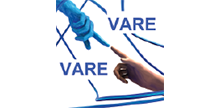Alternatives generation via data analytics for decision making using VR
- a Escuela de Negocios, Ciencias Sociales y Humanidades. Tecnologico de Monterrey, Campus Monterrey.
Ave. E. Garza Sada 2501 sur, Monterrey NL 64849. Mexico - b Escuela de Arquitectura, Arte y Diseño. Tecnologico de Monterrey, Campus Monterrey. Ave. E. Garza Sada 2501 sur, Monterrey NL 64849. Mexico
- c Writing Lab, TecLabs, Vicerrectoría de Investigación y Transferencia de Tecnología. Tecnologico de Monterrey. Ave. Eugenio Garza Sada 2501, Monterrey 64849, NL, Mexico
- d Escuela de Ingeniería y Ciencias. Tecnologico de Monterrey. Ave. Eugenio Garza Sada 2501, Monterrey, N.L., Mexico
Cite as
F. Suarez-Warden, N.A. Aguilera González, S. Gonzalez, S. Hosseini (2018). Alternatives generation via data analytics for decision making using VR. Proceedings of the 4th International Conference of The Virtual And Augmented Reality In Education (VARE 2018), pp. 46-51. DOI: https://doi.org/10.46354/i3m.2018.vare.008
Abstract
Advances in education, economy, and administration in the areas of science and technology as well as social
science disciplines have established a great importance worldwide thus necessity for developing the knowledge-based economies. Due to globalization, the complexity in manufacturing and elaborated processes is continuously increasing. It is, therefore, crucial to develop core business topics related to efficiency and evaluation that incorporate emerging technologies in such areas. Virtual Reality (VR) is known as a computer-generated simulation of three-dimensional (3D) environments that can produce seemingly real images and introduce physical ways of interacting with individuals. VR has become increasingly important in reaching data visualisation for generation of alternative scenarios. Combined with business analytics, VR can offer quantitative models for decision making applied to optimize production and administration procedures. In this study, a case is developed to deploy use of data exploitation and VR for alternatives generation in the decision-making processes.
Alternatives generation | Business analytics | Data visualisation for decision making | Data visualisation for decision making | Virtual Reality
References
- Aguilera, N.A., 2017. Development of spatial skills with virtual reality and augmented reality. International Journal on Interactive Design and Manufacturing, volume 12: 133-144. DOI: 10.1007/s12008-017- 0388-x.
- Chen H., Chiang R.H.L., Storey V.C., 2012. Business Intelligence and Analytics: From Big Data to Big Impact. MIS Quarterly, 36(4): 1165-1188.
- Davenport, T.H., 2014. Big Data @ Work: Dispelling the Myths, Uncovering the Opportunities. Harvard Business Review Press. ix: 228 pages.
- Dhar, V., 2013. Data Science and Prediction.Communications of the ACM, 56(12): 64-73.
- Fan X., Yang R., Wu D., Ma D., 2009. Virtual Assembly Environment for Product DesignEvaluation and Workplace Planning. In: Ma D. et al., eds. Virtual Reality and Augmented Reality in Industry. The 2nd Sino-German Workshop. Berlin,Germany: Springer, 147-161.
- McAfee, A., Brynjolfsson E., 2012. Big Data: The Management Revolution. Harvard Business Review, 90(10): 61-68.
- McAfee, A., Brynjolfsson E., 2012. Big Data: The Management Revolution. Harvard Business Review, 90(10): 61-68.
- Olshannikova, E., Ometov, A., Koucheryavy, Y. et al. (2015) Journal of Big Data, volume 2: 22. https://doi.org/10.1186/s40537-015-0031-2
- Stevenson, W. J., 2018. Operations Management. 13th. ed. US: McGraw-Hill.
- Tukey, J.W., 1977. Exploratory Data Analysis. US: Pearson. ISBN: 978-0201076165
- Turner D., Schroeck M., Shockley R., 2013. Analytics: The real-world use of big data in financial services, Executive Report. US: IBM® Institute of Business Value in collaboration with University of Oxford, Said Business School, pp. 7-10. Available from: https://www-01.ibm.com/common/ssi/cgibin/ssialias?htmlfid=GBE03555USEN&appname =skmwww [Accessed on May 2018]
